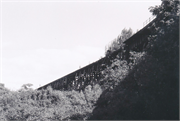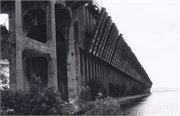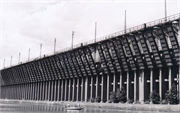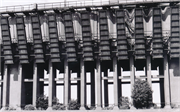| Additional Information: | A 'site file' exists for this property. It contains additional information such as correspondence, newspaper clippings, or historical information. It is a public record and may be viewed in person at the Wisconsin Historical Society, State Historic Preservation Office.
“Iron is king, and Ashland is its capital,” proclaimed the Ashland Daily Press. In the 1880s, the discovery and development of vast iron deposits in the Lake Superior region's Gogebic and Penokee ranges made Ashland and its harbor a center for the shipment of iron ore. The harbor became the hub of a rail and water network linking mines in the hinterland to the industrial heartland. Ashland’s ore docks were designed to transfer bulk cargo from rail cars to large ships, which carried the ore to Chicago and Gary for processing. Formerly, four ore docks lined Ashland’s waterfront, but three were lost to fire or damage from winter ice. The Wisconsin Central Railroad built the survivor in 1917, and leased it to the Minneapolis, St. Paul, and Sault Ste. Marie Railway Company, called the Soo Line. It continued to operate until 1965, when the last Gogebic Range mine closed.
The impressive ore docks along Lake Superior drew on technology developed for loading coal in the East. Excluding the railroad-trestle, this dock measures 1,800 feet long, extends 80 feet above the water line, and boasts a capacity of 105,000 tons. In 1917, the reinforced concrete structure represented the latest construction technology and was the largest of this type on the Great Lakes. All the docks efficiently dumped bulky iron ore from funnel-shaped, 50-ton ore cars, which arrived on the tracks on top of the deck. Workers opened doors on the bottom of the ore cars and released the load into bins that ran the length of the dock on either side. When specially designed steam ships, called lakers, anchored alongside the deck, workers opened the chute at the side of each bin and allowed ore to pour through hatches on the ship’s deck, taking care to keep the ship’s weight balanced and prevent capsizing. |
|---|





